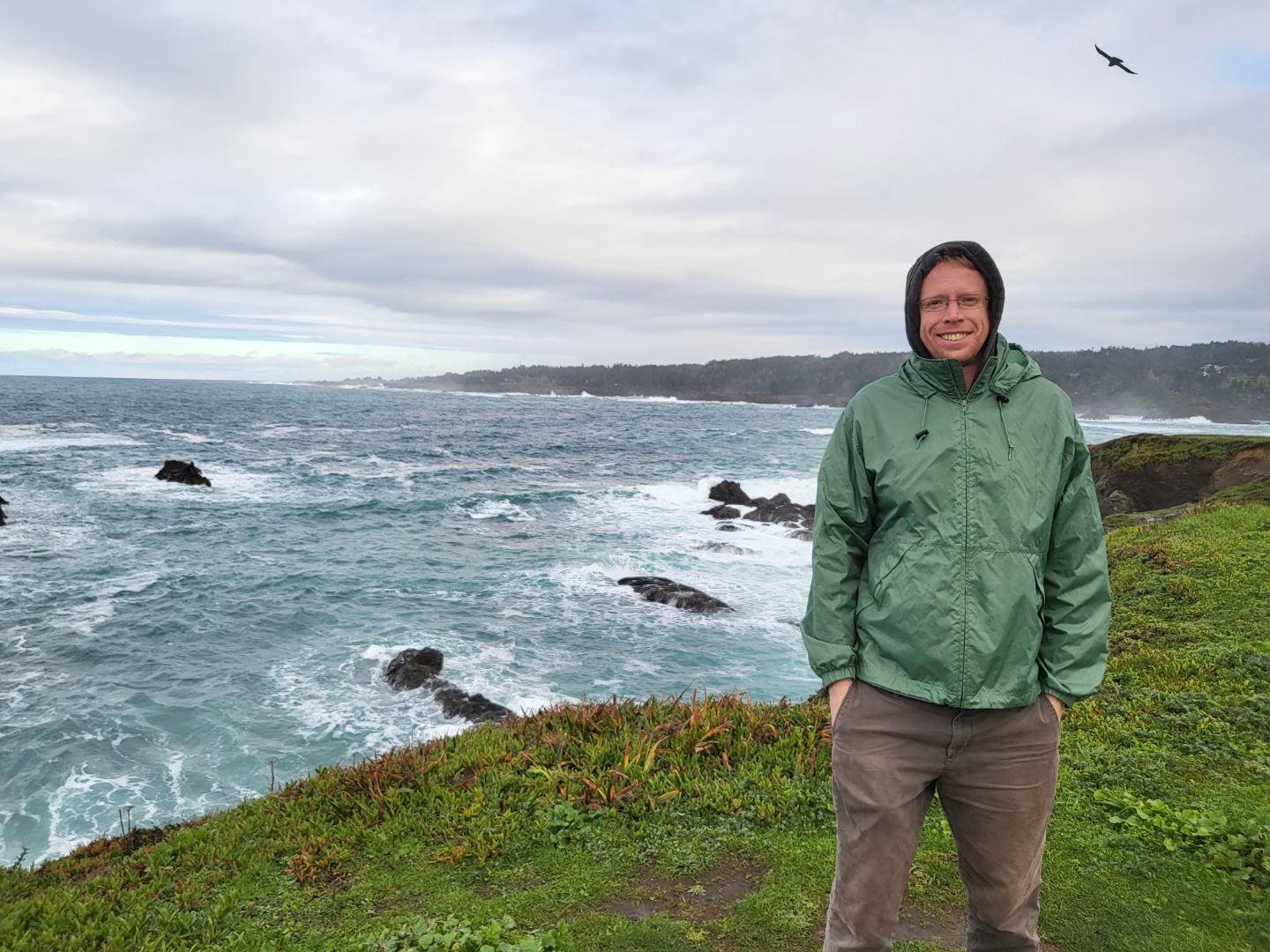A chat with Luke Gilbert
 For the first of our Arc Investigator Profiles, we caught up with our newest Core Investigator, Luke Gilbert. In addition to his role at Arc, Luke is an Assistant Professor at UCSF, where he and his lab have pioneered the development of CRISPR-based epigenome editing tools toward a better understanding of the genetics and epigenetics underlying cancer. He’s particularly known for his work in developing CRISPRi and CRISPRa technology for turning desired genes on and off, and bringing these technologies to genome-wide and combinatorial screens to map the genetic interaction landscape of human cells.
For the first of our Arc Investigator Profiles, we caught up with our newest Core Investigator, Luke Gilbert. In addition to his role at Arc, Luke is an Assistant Professor at UCSF, where he and his lab have pioneered the development of CRISPR-based epigenome editing tools toward a better understanding of the genetics and epigenetics underlying cancer. He’s particularly known for his work in developing CRISPRi and CRISPRa technology for turning desired genes on and off, and bringing these technologies to genome-wide and combinatorial screens to map the genetic interaction landscape of human cells.
What are the big picture questions your lab is working on?
One of the biggest motivations of our lab is that we have a fundamental conundrum in biology, in that our genome only encodes about 20,000 protein-coding genes, which is insufficient to explain the complexity of human cell types. This was a big surprise when the human genome was first sequenced. Based on what we knew about the complexity of model organisms, geneticists thought the human genome would encode somewhere between, say, 80,000 and 100,000 protein-coding genes, and that's just not the case. And so, one of the grand challenges of modern human biology is understanding how a limited set of genes can produce, for example, the complexity of the cell types within the human brain.
This has largely been hypothesized to be possible through the evolution of gene regulatory elements that enable cell type-specific expression programs, by alternative splicing which generates different gene isoforms and also through emergent or non-linear properties that are often described as genetic interactions. Together, these are hypothesized to give rise to a flexibility at the level of gene function that enables specialized cell states. More recently, we’ve also started to work towards understanding how genes or sets of genes work differently under specific environmental conditions: gene by gene by environment interactions.
We can speculate and theorize about these biological concepts, but without the genetic tools to actually manipulate these complicated systems, we can't reduce it to science.

Tell us more about the tools you are building to tackle these problems.
Our lab has largely been centered for the last 10 years on building new tools that enable us to manipulate gene expression to both turn genes on and off in different cell types to start to explore how our 20,000 protein-coding genes enable cell type-specific functions.
Essentially, we build new tools to modulate gene expression through epigenetic editing of genes and gene regulatory elements, and then we also build new functional genomics platforms to measure and understand how pairs or sets of genes interact with each other. We're building wet lab and dry lab approaches to measure genetic interactions sparsely, and then predict additional genetic interactions. Basically, the motivation for this last approach is we know genetic interactions are important but in most biological models we can't measure all interactions between pairs of genes - which would be 20,000 squared – much less between sets of genes, so what do we do? We can’t just give up, so we need a new paradigm for functional genomics.
What are some areas you’d like to explore next?
I’m a cancer biologist by graduate training. We’re initially using these tools to tackle longstanding challenges in cancer biology, both to understand the basics of how, for example, genetic mutations and environmental influences like inflammation drive cancer progression, and also to search for new drug targets, or new means of programming cell therapies that tackle cancer biology using either genes or cells as therapeutics. But I think that is only one area where these tools might be applied, and I’m excited about joining Arc because it enables us to think big and dream about what else we want to do with these genetic platforms across different types of human biology.
I have become more and more interested in the brain and using iPS-based models to try to think about how cells interact within the brain, and then how that goes awry during brain aging. I wouldn’t say we’re at all experts in this area, but I think that some of the principles that we’ve developed in the cancer space can inform our thinking in other diseases, especially in terms of inflammation and immune dysregulation.
How is being at Arc going to impact your science?
Arc is such an amazing opportunity to do fundamental science, and I really think that’s enabled by how Arc is structured and how the labs are supported. I think Arc's model around building Technology Centers is going to be enormously enabling within the institute. Long-term, these are going to be viewed as some of the crown jewels of Arc's mission. I'm really delighted to see Core Investigators’ labs start to work side-by-side as equal partners with the Technology Centers.
Technology development in traditional academic science is somewhat under-credited in terms of how new technologies enable biological discovery. There's certainly plenty of credit that's assigned for technology development, but I think there's almost becoming this divide where you have labs that are technology labs, and you have labs that are biology labs, and I don't think that's a productive split. Arc’s plan is to put everybody under one roof, and incentivize deep, long-term collaborations between folks who have the same goal, but two different approaches to get there. I'm really excited about that, in addition to obviously working with all of the other Core Investigators, which will be really fun, too.
What would be on your technology “wish list”?
We're a very small part of a large community of folks that have just done amazing work over the last 10 years to enable new approaches in all kinds of disease research. But I think there's two areas where we don't have good tools. One is on scalably understanding how cells interact with each other through autocrine, paracrine, and juxtacrine mechanisms. We're excited to either work with folks or build our own tools to enable us to measure genetic interactions between two different cell types, or trigenic interactions, where you perturb two genes in one cell and one gene in another, for example. I think these kinds of approaches are going to be really important for a more systematic, quantitative understanding about how tissues are wired at their basic building blocks, and then in larger and larger structures. For a long time, people have been able to use animal models and mutate one gene, then another gene, and measure phenotypes in a more focused way, but we need to accelerate these approaches. The traditional ways simply aren’t scalable to understanding the function of all genes in all cell types.
For the other thing on my technology wishlist: we use gene expression as a surrogate phenotype, but it's not really what we want to measure. I'm not currently active in this area, but I'm excited to see advances in making protein-level measurements at single-cell resolution. Someday, it would be wonderful to do single-cell proteomics for post-translational modifications in a scalable and quantitative way. And the challenge there is that obviously, proteins aren't amplifiable in the way that nucleic acids are. It's a huge challenge, but some very smart folks are working on this. Maybe it's 20 years away, or maybe it won't happen. And if it doesn't happen, then I think we need new informatics approaches for making limited numbers of measurements and then extrapolating that, perhaps through combined protein and RNA measurements, to infer what we really want to be measuring, which is post-translational modifications and protein-protein interactions.
What would you be doing if you didn’t become a scientist?
My family's not in science. I didn't really understand that science was a career that you could have until probably early in college, to be honest. I think if I wasn't a scientist, the honest truth is I wanted to become a diplomat! I found the idea of negotiating between groups of people that have different priorities to be a fascinating career.
What are some of your hobbies outside the lab?
I love running. I've run since high school. I ran cross-country… it helps me clear my head, and I have some of my best ideas while I'm running, to be honest. I also love good food and good beer. There's tons of good food and good beer in San Francisco. I love spending time with my friends and my dog, and hiking.

What is one really good piece of advice that you got from a mentor?
It's been too many years for me to quote this word-for-word, but Angelika Amon was a really influential person early on in my scientific development. She ran a lab in the cancer center on the floor above us, and once she told me that she was frustrated with a grant that had been rejected. She said that what had been really useful for her over the course of her career was to realize that you need to bet on yourself and your own ideas, and if you're convinced something is a good idea, it doesn't really matter if you don't get short-term external validation. You should keep going and be convinced that your ideas will have an impact on the world, or on human health. That was really good advice.

